It's not only on long journeys that the dangers of developing deep vein thrombosis arise: sitting for more than an hour at any activity, even just watching television, increases the risk of DVT. People who spend long hours in front of their computer screens with little leg or ankle movement are often unaware of how much at risk they are, which is how I came to find Calf Flexors.

Avoiding DVT While Travelling
by Maritravel
The dangers of long periods of inactivity on a plane are well known. Now along comes an exercise shoe that promises to alleviate some of these problems.
Calf Flexors
Let's start with a shocking fact - blood clots kill more than cancer. DVT is known as the silent killer so who among us doesn't want to prevent an attack while travelling, or even while sitting at home. As a travel writer and a regular traveller, I read about Calf Flexors and having tried them and been impressed by the simplicity of their use, I want to bring them to everyone's attention.
Support socks only seem to compress the leg and, in my own case, there was a degree of discomfort and I always felt that the blood wasn't freely circulating inside the leg. A lot of my travel is in hotter climes and compression socks were doubly uncomfortable because of the heat: I often removed them before the flight was over because of this (14 - 18 hours is a long time to have to endure warm legwear)!

What are calf flexors?
Calf Flexors are difficult to describe (but see photo below) they are foot supports with a curved rocker sole that align the mid-arch area of the foot with the centre of the rocker in a comfortable flexing position. They can be worn underneath flat shoes for use while seated in an office or, in fact, in any environment ( doubly helpful when in a 'plane as it means there is no need to remove shoes). A book or other hard flat object may be placed under the rocker sole to increase the flexing movement if wished.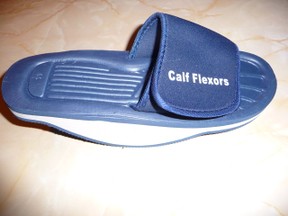
In addition, the flexors can be turned upside down to allow the wearer to stretch their feet over the lower curved ribbed sole, great for relaxing tired feet.
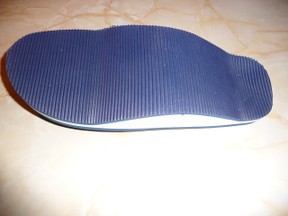
Medical Advice on how to Avoid DVT
Doctors estimate that a person is at a high risk of DVT when seated for an hour or more and they advise people to exercise their lower legs regularly to help reduce the risk of blood clots developing (the reason also, why the safety instructions given out on the 'plane, recommends foot and ankle exercises during the journey).
A person can exercise their lower legs while seated by the simple flexing movement of the foot, and by raising and lowering the heel the calf muscle is flexed. This stimulates the blood flow.
DVT most often occurs in the lower legs and it can affect most age groups, including teenagers. In fact, according to the inventor of the Calf Flexors, the Thrombosis charity estimates that as many as 60 teenagers have died in recent years due to this.
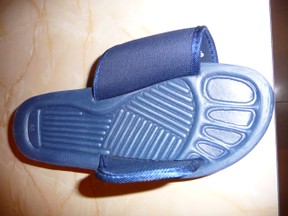
What the UK's National Health Service says about DVT
Deep Vein Thrombosis are blood clots that develop in one of the deep veins in the body and are known as venous thrombosis. The condition usually occurs in a deep leg vein, a larger vein that runs through the muscles of the calf and the thigh and can cause pain and swelling in the leg and may lead to complications such as pulmonary embolism. This is when a piece of blood clot breaks off into the bloodstream and blocks one of the blood vessels in the lungs.
DVT and pulmonary embolism together are known as venous thromboembolism (VTE).
Are you at risk?
Anyone can develop DVT but it becomes more common with age and every year one in every 1,000 people is affected by the conditiion. As well as age, if there is a family history of blood clots, if you are a smoker or have a medical condition such as cancer or heart failure, if you are obese or severely overweight, then these must be considered risk factors.
When you are inactive your blood tends to collect in the lower parts of your body but when you start to move, your blood flow increases and moves evenly around your body. However, if you are sitting for a long period of time, during a long journey for instance or while engrossed on your computer, your blood flow can slow down considerably and can increase the chance of a blood clot forming.
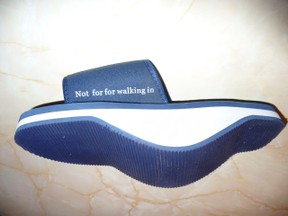
Who Supplies Calf Flexors
The designer of these exercisers is a UK ex-air ambulance pilot who was inspired to design the Calf Flexors after losing a close friend and a relative to DVT which he calls "the silent killer". At the moment they are available from some pharmacies at £14. 95, but they can be ordered from the website Calf Flexors at a special price for now of £10. 99 a pair.
You might also like
How to Lower Cortisol Levels Reduce Stress Hormone and Improve...Cortisol is a steroid hormone regulating metabolism, the immune system and ai...
Walking Your Way to HealthThere is much research that shows that walking is beneficial to body and mind.
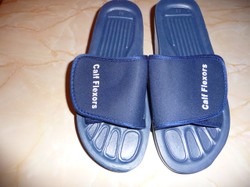


 The Alternative Picture Galleryon 04/20/2016
The Alternative Picture Galleryon 04/20/2016
 ROME - Where the Past Comes to Lifeon 03/26/2016
ROME - Where the Past Comes to Lifeon 03/26/2016
 Only in London - New Unique Guideon 01/25/2016
Only in London - New Unique Guideon 01/25/2016
 Manna, from Sicily, not from Heavenon 01/08/2016
Manna, from Sicily, not from Heavenon 01/08/2016


Comments
Thanks for commenting. I use mine all the time while I'm sitting at the computer. As you say, CruiseReadtm we don't realize how long we sit in one position sometimes. And Mira they are not quite slippers, more like a big slip-on and you can keep your own shoes on while you are wearing them (not stilettos obviously). Not sure about men's shoes but I keep mine on while I'm wearing the calf flexors.
This is probably something that folks who spend time writing should pay attention to. It's an activity that is so engrossing that one often doesn't even realize how long they've been sitting in the same position!
I know someone who developed a blot clot on a plane. She said it's really important to hydrate well during flights. I somehow never thought of ankle and calf exercises. As Jan said, this is invaluable advice. So those are a kind of slippers then?
What a great idea. I've heard of wearing compression socks when you travel on planes, but haven't heard of calf flexors. You can also use these when you sit at a desk all day at work.
Invaluable advice and important to make as many people as possible aware of this silent killer.